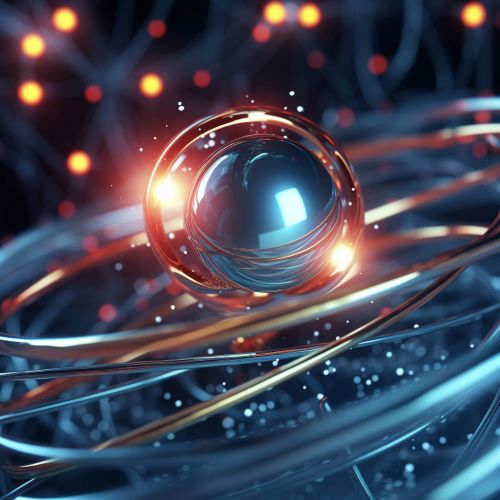Proton
Introduction
A proton is a subatomic particle, symbol p or p+, with a positive electric charge of +1e elementary charge and a mass slightly less than that of a neutron. Protons and neutrons, each with masses of approximately one atomic mass unit, are collectively referred to as "nucleons" (particles present in atomic nuclei).


Discovery
The concept of a hydrogen-like particle as a constituent of other atoms was developed over a long period. As early as 1815, William Prout proposed that all atoms are composed of hydrogen atoms (which he called "protyles"), based on a simplistic interpretation of early values of atomic weights, which was disproved when more accurate values were measured.
Structure
In the modern Standard Model of particle physics, the proton is a hadron, and like the neutron, the other nucleon (particle present in atomic nuclei), is composed of three quarks. Although the proton was originally considered a fundamental or elementary particle, it is now known to be composed of three valence quarks: two up quarks and one down quark.
Charge and Mass
The rest masses of quarks contribute only about 1% of a proton's mass. The remainder of a proton's mass is due to the kinetic energy of the quarks and to the energy of the gluon fields that bind the quarks together. Because protons are not fundamental particles, they possess a physical size; the radius of a proton is about 0.84–0.87 fm.
Interaction
The interaction of protons with other matter is complicated by the effects of the strong nuclear force, which binds protons together within atomic nuclei. This force is much stronger than the electromagnetic force that causes positively charged protons to repel each other, but its influence is limited to distances on the order of a few femtometers.
Stability
Protons are stable and are among the essential components of the observable universe. They are a necessary part of atomic nuclei, which make up everything in the universe that is not dark matter or energy. Protons also play a key role in nuclear reactions and particle physics due to their stability, large mass, and positive charge.
In Chemistry
In chemistry, the number of protons in the nucleus of an atom is known as the atomic number, which determines the chemical properties of an atom and hence the element. For example, any atom that contains six protons is an atom of carbon, regardless of how many neutrons or electrons it may have.
In Medicine
Proton therapy is a type of particle therapy that uses a beam of protons to irradiate diseased tissue, most often in the treatment of cancer. The chief advantage of proton therapy is the ability to more precisely localize the radiation dosage when compared with other types of external beam radiotherapy.
